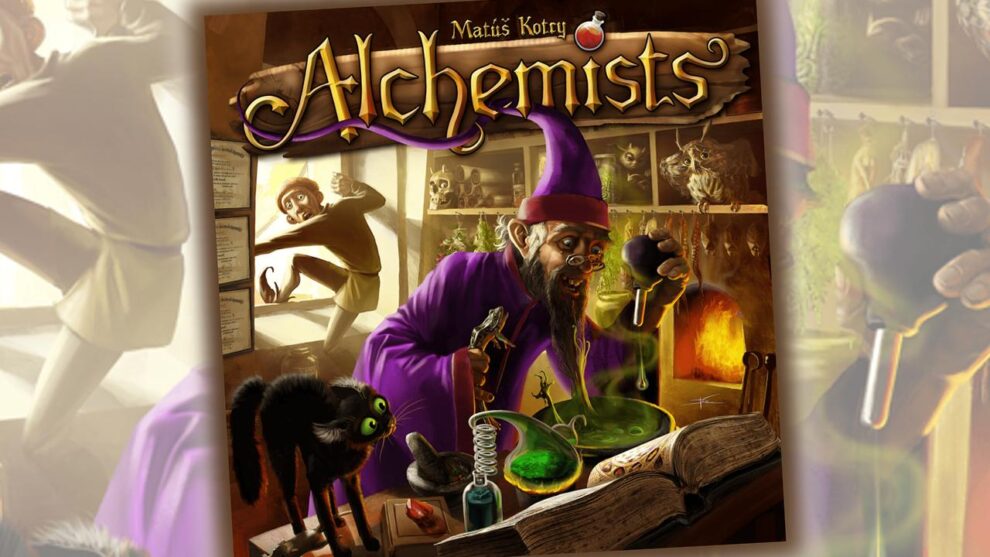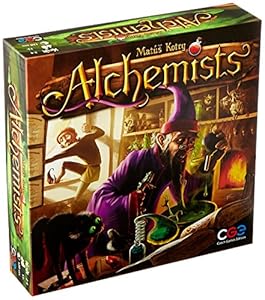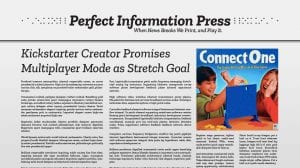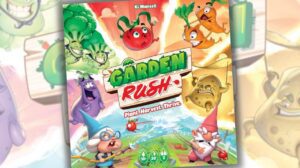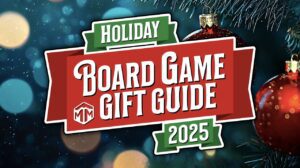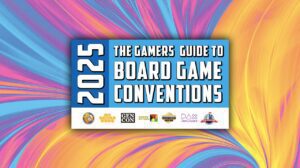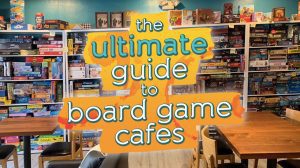Renfurly the Orange is a man of legend, a true visionary, and a brilliant scientist. His intellect knows no bounds. He can hold two items in his hand and make the brilliant logical leaps that show how those two things are related to one another. To know the mind of Renfurly is to know greatness. Renfurly is the world’s greatest alchemist and his is a name destined for the history books.
At least that’s how Renfurly sees things. Right now, though, he’s busy trying to figure out the alchemical makeup of a toad, and things are not going as smoothly as he’d like. For one thing, he’s working with a toad. “Why toads?” you may ask. Because his assistant is obsessed with the things. Every time he sends the lad out to gather components, he always returns with toads. Sometimes you just have to work with what you have.
This latest potion was a disaster. Renfurly had expected the contents of the vial to be clear and frothy but what he’d wound up with was a whitish opaque mess with the consistency of snot. Unfazed by his abject failure, he’d convinced his assistant to drink some of it in the name of science.
The lad had been rather eager at first. After his first swig of the vile conglomeration, he’d said that he felt more alive than he ever had before. The boy had said he felt like he could run a mile without breaking a sweat and that he felt like he could bend iron with his bare hands. He’d said that his mind was more focused and sharper than ever.
The only thing wrong with this, though, was that he’d told this to a houseplant. So, Renfurly had been forced to admit defeat. Now, he was having to start all over again with a new toad and a new apprentice. Sighing, he rolled up his sleeves and got back to work. Being an alchemist takes a lot of patience and a lot of trial and error, and Renfurly was up to the task.
Overview
In the game of Alchemists, the players take on the roles of alchemists that are attempting to deduce the alchemical makeup of several different elements through the process of elimination. They will use their limited actions to gather resources, create and test potions, and also sell potions to fill their coffers. As they make discoveries, they will have the opportunity to publish theories to increase their reputation. But, they’d better be careful. It’s not easy to rebuild your reputation after you’ve ruined it. When all is said and done, the winner will be the alchemist with the most renown. Will that alchemist be you? Do you have the mental chops to deduce the alchemical makeup of the elements before your opponents?
If you’re already familiar with Alchemists and just want to know what I think, feel free to skip ahead to the Thoughts section. Otherwise, read on as we go into more detail about how the game is played.
Setup
Set up the game board and populate it with the appropriate cards and tiles. Then, set up the theory board, placing each of the different grants into its marked location. The alchemical tokens are kept close by in a general supply.
 Each player chooses a color and takes a player screen along with the player board, bidding cards, and all the chits, cubes, and pawns of their chosen color. One player pawn is set next to the turn order track and the other is placed into the starting position on the scoring track.The player board, which is used to keep track of a player’s collected grants as well as which types of potions they’ve produced throughout the course of the game, is kept in plain sight. The rest of their components are hidden behind the player screen.
Each player chooses a color and takes a player screen along with the player board, bidding cards, and all the chits, cubes, and pawns of their chosen color. One player pawn is set next to the turn order track and the other is placed into the starting position on the scoring track.The player board, which is used to keep track of a player’s collected grants as well as which types of potions they’ve produced throughout the course of the game, is kept in plain sight. The rest of their components are hidden behind the player screen.
Mounted on the inside of the player screen is the deduction board. It’s triangular in shape and features seven differently colored diagonal stripes. At the bottom of each stripe is an ingredient—purple mushrooms, green ferns, brown toads, yellow chicken feet, blue flowers, tan mandrake root, red scorpions, and black feathers. Inside of this triangular structure are circular cutouts where tokens can be placed. These cutouts are placed at the intersections where imaginary lines drawn from each ingredient towards the apex of the triangle would meet. Mounted above this is a secondary screen that has a little shelf on it. This is used for combining ingredients using the smartphone app.
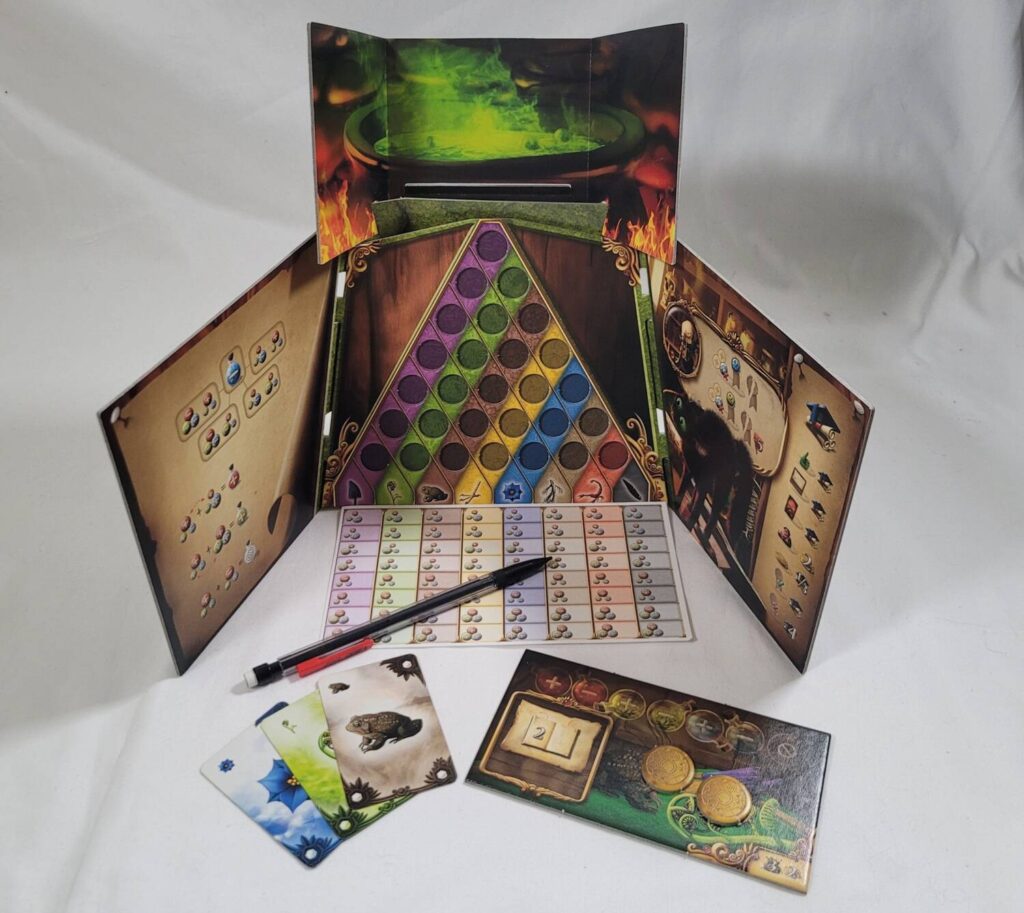
Each player receives a sheet from the deduction pad which they place in front of the deduction screen. This deduction sheet lines up with the ingredients on the deduction screen, and it is here that players are going to be doing most of their work and recording the results of their research. More on all of that later. For now, a player will be selected to bid for turn order first, handed the starting player token, and then you’re ready to go.
Important Concepts: Ingredients, Aspects, and Alchemicals
The entire point of this game is trying to figure out which alchemical tokens correspond to which ingredients. Every alchemical is made up of 3 aspects—circles colored red, green, or blue. And each of these aspects has one of four possible states (size and polarity):
Large and positive | Large and negative | Small and positive | Small and negative
When two ingredients are combined, that combination will result in a color + polarity output. This is where the app is going to come into play. To combine ingredients, place two ingredient cards side by side behind your player screen and focus your phone’s camera onto the two cards. The app will determine what cards you’re testing together and then provide you with the result. After this, your ingredient cards are discarded face down so that nobody knows what was used to generate the result.
When combining two ingredients together, if there are two same-colored circles of different size, but same polarity, they will cause an output of a same-colored potion of that polarity. If all three circles are the exact opposite of one another, then they will result in a neutral potion. To better illustrate this, let’s consider an example:
Bob combines a toad and a green plant. Unbeknownst to Bob, the app has decided behind the scenes that the toad is composed of a small blue negative, a small green positive, and a large red positive and that the green plant is composed of a large blue positive, a small green negative, and a small red positive. Since the red aspects meet the same polarity, same color, different size criteria, then the app would return the result: positive red. Bob would then place a positive red deduction token onto his deduction board where the line from the toad and the green plant meet.
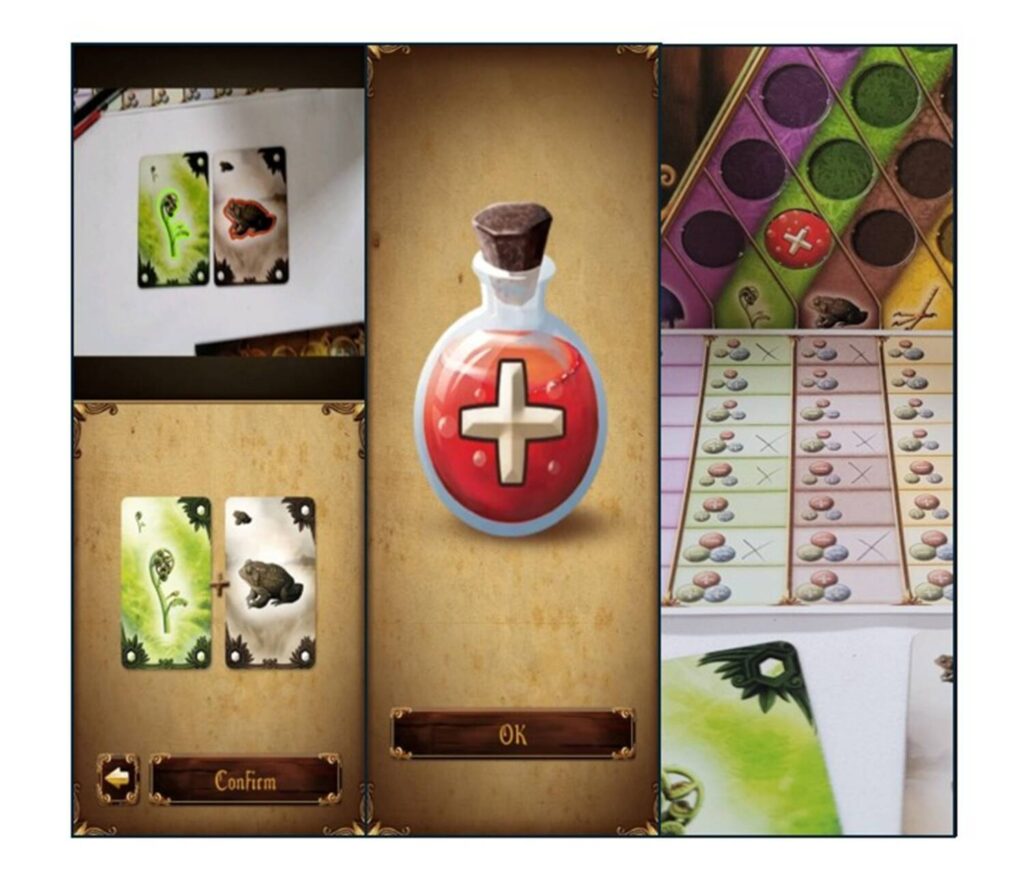 Bob has learned some valuable information here. Since Bob knows that there must be two positive red aspects present to generate a positive red output, he can logically deduce that any alchemicals that do not have positive reds in them cannot belong to either one of these ingredients and then he can mark those off of his list. With one single experiment, Bob has narrowed down the possibilities quite a bit!
Bob has learned some valuable information here. Since Bob knows that there must be two positive red aspects present to generate a positive red output, he can logically deduce that any alchemicals that do not have positive reds in them cannot belong to either one of these ingredients and then he can mark those off of his list. With one single experiment, Bob has narrowed down the possibilities quite a bit!
Turn Order, Action Selection, and Taking Actions
Virtually every action you perform in Alchemists is going to earn/cost you some reputation or earn/cost you some extra money (or some mixture thereof). At the beginning of each round, the person holding the starting player token will select a turn order space from the turn order track and take whatever action is associated with it (if any). Then the other players, in turn, select their turn order. Once everyone has selected their turn order, the players will begin selecting ALL their actions for the round.
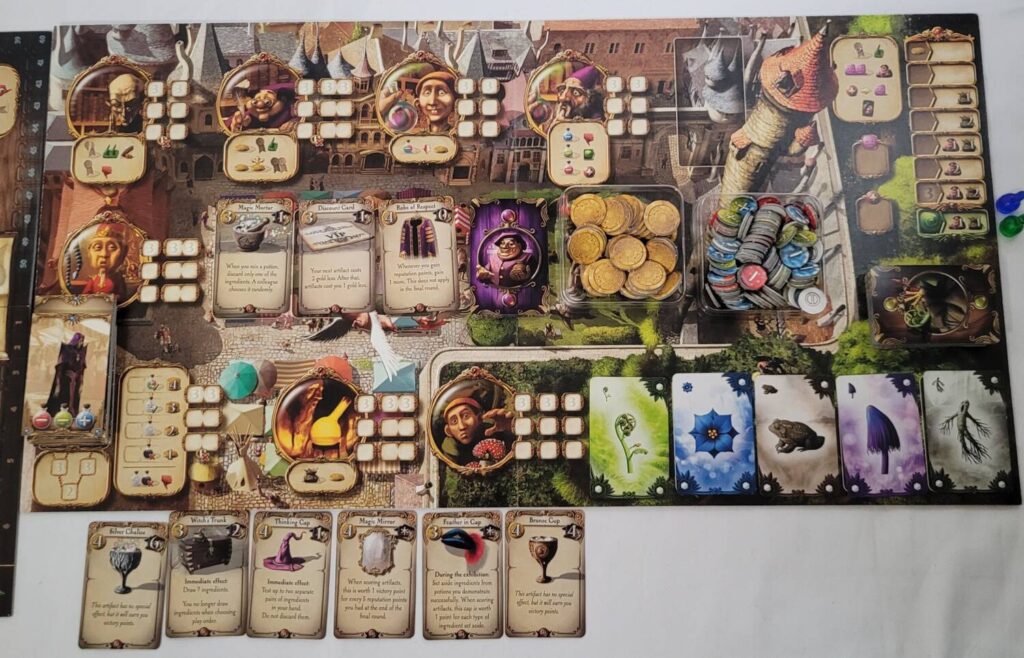 When it comes time to actually perform the actions, the actions will be performed in order beginning with the forage action area and moving around the board to the drink potions action area. Beginning with the player at the top of the leftmost column of the current action area and then moving down that column, players will take turns performing their actions, retrieving their cubes as they do so. Once the first column is cleared, the second column is handled. Once the second column is clear, the actions in the next area are handled. And, once all of the actions on the board have been taken, a new round will begin.
When it comes time to actually perform the actions, the actions will be performed in order beginning with the forage action area and moving around the board to the drink potions action area. Beginning with the player at the top of the leftmost column of the current action area and then moving down that column, players will take turns performing their actions, retrieving their cubes as they do so. Once the first column is cleared, the second column is handled. Once the second column is clear, the actions in the next area are handled. And, once all of the actions on the board have been taken, a new round will begin.
So, let’s briefly discuss what each of the actions is used for.
The Actions
Forage: Gain new ingredient cards.
Transmute: Sell an ingredient card from your hand for gold.
Selling potions/adventurer: Compete for the adventurer’s business in order to sell your potions for gold and/or reputation.
Purchasing artifacts: If you’ve got the gold, you can purchase any one of the face up artifacts, cards which provide powerful abilities and/or end-game victory points.
Test on student: Combine two ingredients to create a potion and have the student drink it to learn the results. After too many negative results, students begin charging money.
Test on self: Combine two ingredients to create a potion, drink it yourself to learn the results, and suffer the consequences of any negative results from having done so. But, hey, at least you saved money.
Important Concepts: Publishing and Debunking Theories
The other two actions, publishing a theory and debunking a theory require more detailed explanation.
Publishing a theory: While this technically appears AFTER debunking a theory, it makes sense to tackle these out of order. Publishing theories is key to earning reputation which, in turn, is key to earning the victory points that will win you the game.
To publish a theory, you simply declare that you are doing so. Then, select one of the available alchemical tokens and place it onto the empty alchemical token space next to the ingredient that you are publishing a theory for. Being the first person to publish this theory will earn you reputation, and it will also cost you a gold. But sometimes you might not want to publish a new theory. Sometimes you may have come to the same conclusion that someone else did and you may want to simply back their theory, paying both them and the bank a gold for doing so. Doing this will not earn you any reputation immediately, but it may earn you victory points at the end of the game. It might even earn you a grant under the right circumstances.
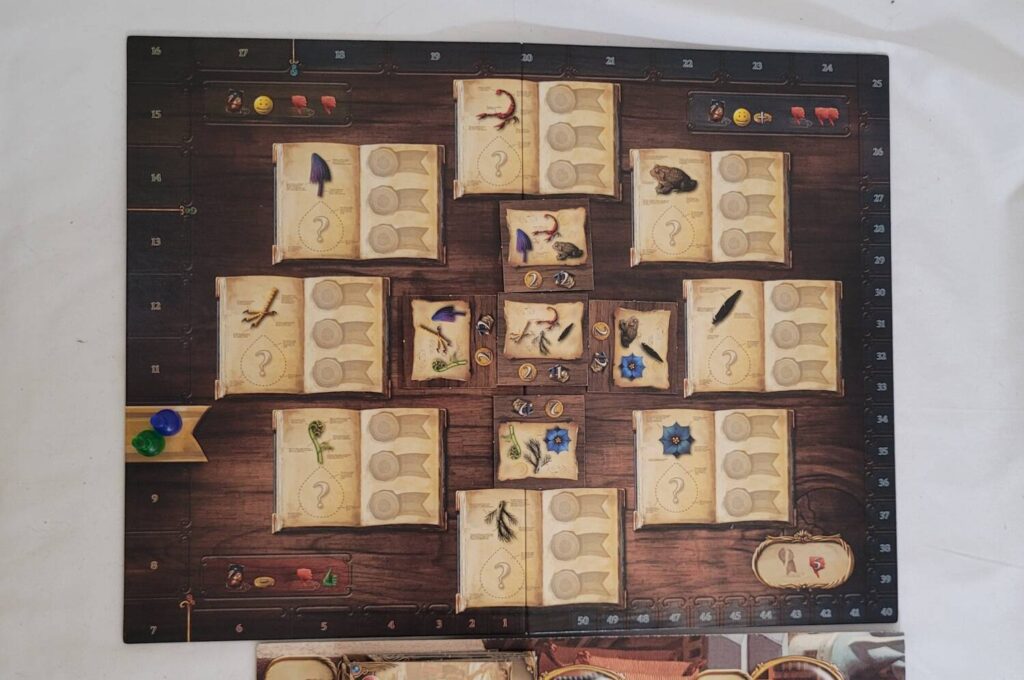 So, to show that you’ve published your theory (or backed an existing one) you will select one of your seals and place it face down onto one of the three empty seal spaces. And there are five different seals to choose from – a seal with a 5 on it, a seal with a 3, a seal with the color green, a seal with the color blue, and a seal with the color red. If you’re certain you’ve got it right, you can publish your theory with the number 5 seal. When this gets flipped over at the end of the game, it will garner you five victory points. The same goes with the number 3. However, you might be pretty sure about two of the colors, but a little sketchy on the third and this is where the colored seals come in handy.
So, to show that you’ve published your theory (or backed an existing one) you will select one of your seals and place it face down onto one of the three empty seal spaces. And there are five different seals to choose from – a seal with a 5 on it, a seal with a 3, a seal with the color green, a seal with the color blue, and a seal with the color red. If you’re certain you’ve got it right, you can publish your theory with the number 5 seal. When this gets flipped over at the end of the game, it will garner you five victory points. The same goes with the number 3. However, you might be pretty sure about two of the colors, but a little sketchy on the third and this is where the colored seals come in handy.
The process of publishing a theory with a color seal is called ‘hedging’. When you place a seal with the red color on it, for instance, you are hedging against the red color. What this effectively says is that you are pretty certain that the green and blue aspects that you have selected are of the correct polarity and correct size, but the details of the red aspect might not be correct. This way, if you are ever called out on it and you do, in fact, have the red aspect wrong, you won’t be punished for it. Getting called out and being wrong can hurt. Which brings me to…
Debunking a theory: to debunk a theory, you announce which theory you are debunking. Then you announce which aspect of the theory you believe to be wrong and use the app to debunk it. The app will show everyone at the table what the correct aspect is and, if the aspect is indeed wrong, then everyone that has published to that theory so far will have their seals removed from the game and they will lose reputation for doing so. This can really hurt because the higher you are on the reputation track, the more reputation you will lose whenever you lose any. At that point, the person who debunked the theory (if they have also placed cubes on the publish theory action) may immediately publish either a theory for the ingredient that was just disproven or they may move the alchemical token to a different ingredient. In the right circumstances, this could earn them a grant. All it takes to earn a grant is to be the first person to publish a certain number of theories for the ingredients shown on the grant tile. Debunking a theory successfully will also earn the debunker reputation.
The game comes to an end at the end of the sixth round. At the end of this round, any reputation points become victory points. Then the victory points are tallied and the player with the most is the winner.
Thoughts
My initial draw to this game was David Cochard’s stellar artwork. The box art tells a story, one of a wizened old alchemist and his apprentice. The alchemist, clad in formless purple robes, stands over a boiling cauldron, a toad gripped tightly in one hand and a dropper held in the other. A long droplet of some greenish substance stands poised to fall into the cauldron from which noxious fumes arise. The alchemist’s eyes are wide open, a look of joyful expectation on his face. He clearly believes that something amazing is about to happen.
His apprentice, however, clearly believes something explosive is about to happen. We can surmise this because his apprentice is making a hasty exit from the nearest window with a look of stark terror on his face. Even the alchemist’s owl familiar is covering its eyes. This is clearly a scene that has played itself out time and time again. Before you’ve even opened the box you know that this is a game filled with self-deprecating humor and that makes sense, really, because, after all, alchemy is silly.
Alchemists is one of the most inventive and original games that I have seen in my board gaming journey. Due to the way the app assigns the various alchemicals to the different ingredients, there is a ton of replay value here. That, coupled with unpredictable opponents, guarantees that no two games will ever be the same. A strategy that worked well for you last game might fail you in this one. Alchemists requires you to have your thinking cap on and it requires you to be able to react on the fly to whatever situation is presented to you.
I have been a puzzle fanatic for a long time and something about this aspect of the game just speaks to me. Like many worker placement games, there’s never enough time for you to do absolutely everything that you want to do and trying to accumulate enough information to publish a sound theory can be quite difficult and challenging… but it’s a lot of fun.
Be advised, this game is a brain-burner. If that isn’t your cup of tea, you’ll probably not enjoy this game at all. Also, on average, this game can take anywhere from one and a half to two hours to complete (if not even longer). So if you’re not a fan of games that have a tendency to run long, this isn’t the game for you. That being said, if playing a game that is going to challenge you and force you to think really hard, a game with a unique theme and a lot of interaction, and a game that is high quality fun, then you can’t go wrong with Alchemists.


